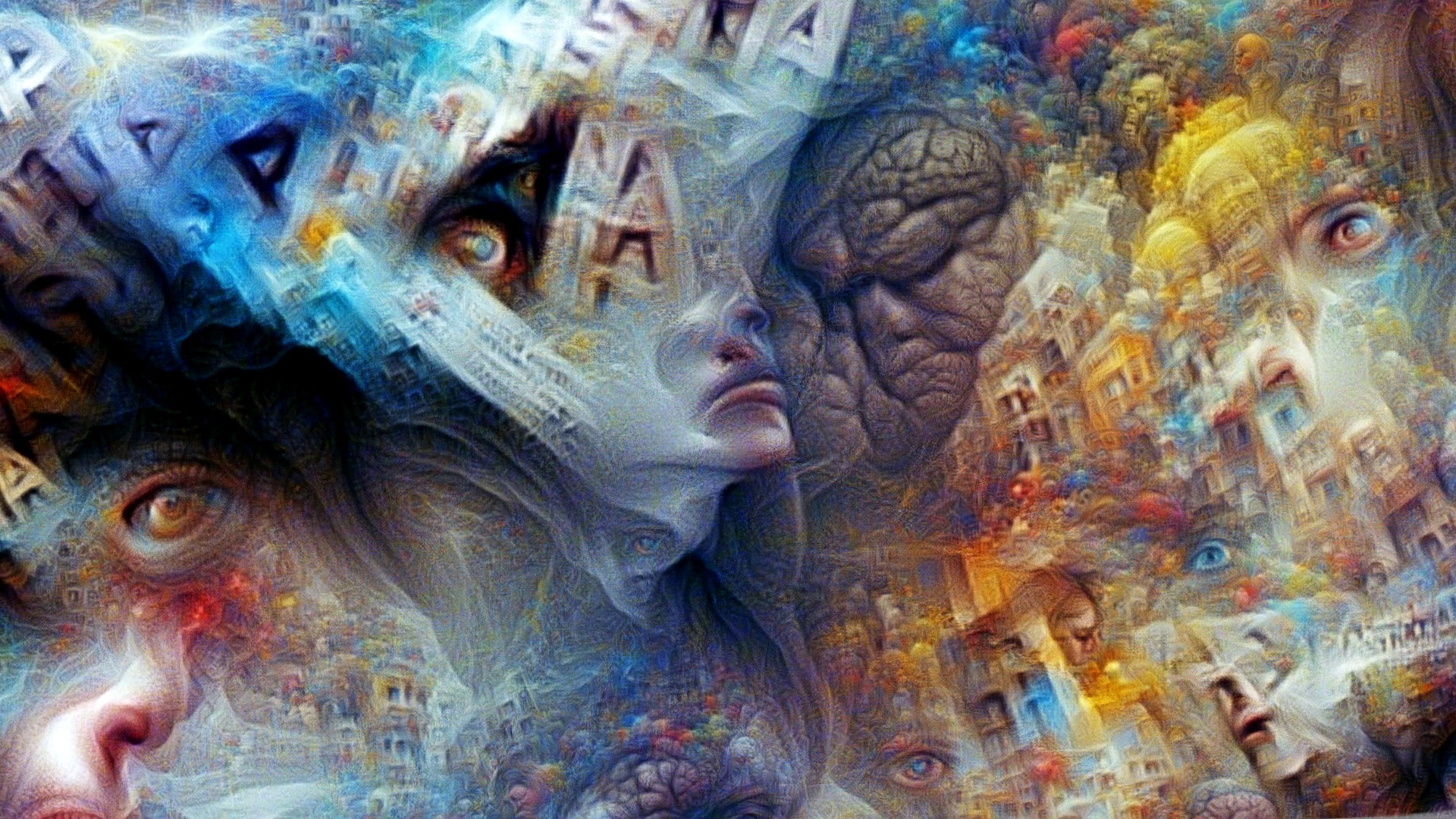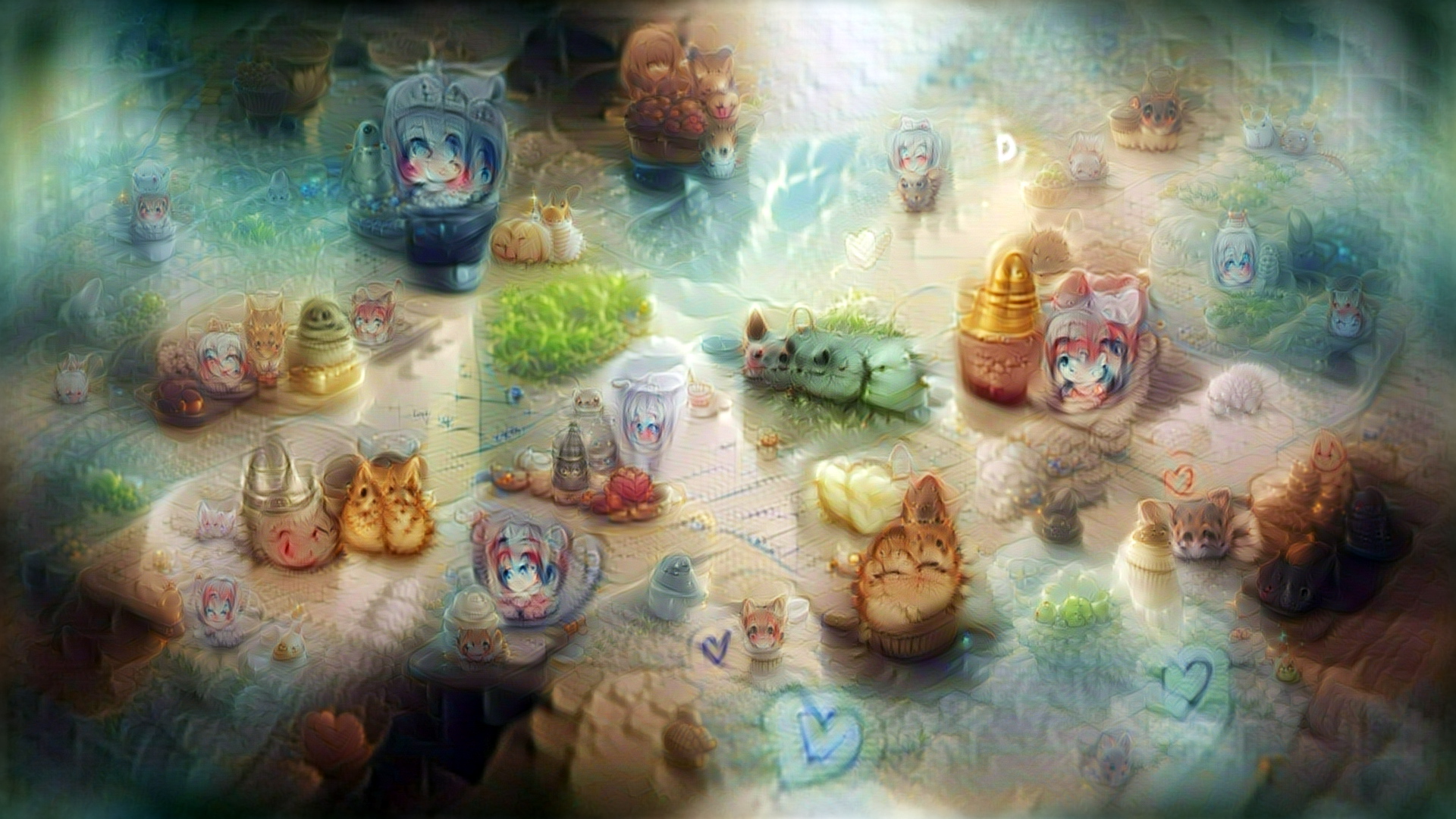This is a collection of text-to-image tools, evolved from the artwork of the same name.
Based on CLIP model and Lucent library, with FFT/DWT/RGB parameterizers (no-GAN generation).
Updated: Illustrip (text-to-video with motion and depth) is added.
Updated: DWT (wavelets) parameterization is added.
Updated: Check also colabs below, with VQGAN and SIREN+FFM generators.
Tested on Python 3.7 with PyTorch 1.7.1 or 1.8.
Aphantasia is the inability to visualize mental images, the deprivation of visual dreams.
The image in the header is generated by the tool from this word.
Please be kind to mention this project, if you employ it for your masterpieces
- generating massive detailed textures, a la deepdream
- fullHD/4K resolutions and above
- various CLIP models (including multi-language from SBERT)
- continuous mode to process phrase lists (e.g. illustrating lyrics)
- complex queries:
- text and/or image as main prompts
- separate text prompts for style and to subtract (avoid) topics
- starting/resuming process from saved parameters or from an image
Setup CLIP et cetera:
pip install -r requirements.txt
pip install git+https://github.com/openai/CLIP.git
- Generate an image from the text prompt (set the size as you wish):
python clip_fft.py -t "the text" --size 1280-720
- Reproduce an image:
python clip_fft.py -i theimage.jpg --sync 0.4
If --sync X argument > 0, LPIPS loss is added to keep the composition similar to the original image.
You can combine both text and image prompts.
For non-English languages use either --multilang (multi-language CLIP model, trained with ViT) or --translate (Google translation, works with any visual model).
- Set more specific query like this:
python clip_fft.py -t "topic sentence" -t2 "style description" -t0 "avoid this" --size 1280-720
- Other options:
--model Mselects one of the released CLIP visual models:ViT-B/32(default),ViT-B/16,RN50,RN50x4,RN50x16,RN101.
--dwtswitches to DWT (wavelets) generator instead of FFT. There are few methods, chosen by--wave X, e.g.db2,db3,coif1,coif2, etc.
--align XXoption is about composition (or sampling distribution, to be more precise):uniformis maybe the most adequate;overscancan make semi-seamless tileable textures.
--steps Nsets iterations count. 100-200 is enough for a starter; 500-1000 would elaborate it more thoroughly.
--samples Nsets amount of the image cuts (samples), processed at one step. With more samples you can set fewer iterations for similar result (and vice versa). 200/200 is a good guess. NB: GPU memory is mostly eaten by this count (not resolution)!
--decay X(compositional softness),--colors X(saturation) and--contrast Xmay be useful, especially for ResNet models (they tend to burn the colors).--sharp Xmay be useful to increase sharpness, if the image becomes "myopic" after increasingdecay. it affects the other color parameters, better tweak them all together! Current defaults are--decay 1.5 --colors 1.5 --contrast 0.9 --sharp 0.3.
--transform Xapplies some augmentations, usually enhancing result (but slower). there are few choices;fastseems optimal.
--invertnegates the whole criteria, if you fancy checking "totally opposite".
--save_pt myfile.ptwill save FFT/DWT parameters, to resume for next query with--resume myfile.pt. One can also start/resume directly from an image file.
--opt_step Ntells to save every Nth frame (useful with high iterations, default is 1).
--verbose('on' by default) enables some printouts and realtime image preview. - Some experimental tricks with less definite effects:
--enforce Xadds more details by boosting similarity between two parallel samples. good start is ~0.2.
--expand Xboosts diversity by enforcing difference between prev/next samples. good start is ~0.4.
--notext Xtries to remove "graffiti" by subtracting plotted text prompt. good start is ~0.1.
--noise Xadds some noise to the parameters, possibly making composition less clogged (in a degree).
--macro X(from 0 to 1) shifts generation to bigger forms and less disperse composition. should not be too close to 1, since the quality depends on the variety of samples.
--progsets progressive learning rate (from 0.1x to 2x of the one, set bylrate). it may boost macro forms creation in some cases (see more here).
--lratecontrols learning rate. The range is quite wide (tested at least within 0.001 to 10).
Here is two ways of making video from the text file(s), processing it line by line in one shot.
New method, interpolating topics as a constant flow with permanent pan/zoom motion and optional 3D look.
- Make video from two text files, processing them line by line, rendering 100 frames per line:
python illustrip.py --in_txt mycontent.txt --in_txt2 mystyles.txt --size 1280-720 --steps 100
- Make video from two phrases, with total length 500 frames:
python illustrip.py --in_txt "my super content" --in_txt2 "my super style" --size 1280-720 --steps 500
One can also use image(s) as references with --in_img argument. Explore other arguments for more explicit control.
This method works best with direct RGB pixels optimization, but can also be used with FFT parameterization:
python illustrip.py ... --gen FFT --smooth --align uniform --colors 1.8 --contrast 1.1
To add 3D look, download AdaBins model to the main directory, and add --depth 0.01 to the command.
Old method, generating separate images for every text line (with sequences and training videos, as in single-image mode above), then rendering final video from those (mixing images in FFT space) of the length duration in seconds.
- Make video from a text file, processing it line by line:
python illustra.py -i mysong.txt --size 1280-720 --length 155
There is --keep X parameter, controlling how well the next line/image generation follows the previous. By default X = 0, and every frame is produced independently (i.e. randomly initiated).
Setting it higher starts each generation closer to the average of previous runs, effectively keeping the compositions more similar and the transitions smoother. Safe values are < 0.5 (higher numbers may cause the imagery getting stuck). This behaviour depends on the input, so test with your prompts and see what's better in your case.
- Make video from a directory with saved *.pt snapshots (just interpolate them):
python interpol.py -i mydir --length 155
- VQGAN from Taming Transformers
One of the best methods for colors/tones/details (especially with new Gumbel-F8 model); has quite limited resolution though (~800x600 max on Colab).
- Continuous mode with VQGAN (analog of Illustra)
- SIREN + Fourier feature modulation
One of the first methods, not so interesting these days.
Based on CLIP model by OpenAI (paper).
FFT encoding is taken from Lucent library, 3D depth processing made by deKxi.
Thanks to Ryan Murdock, Jonathan Fly, Hannu Toyryla, @eduwatch2, torridgristle for ideas.



